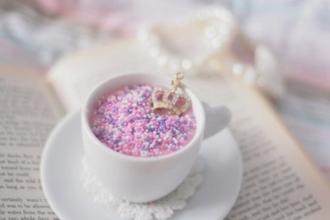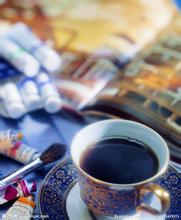Introduction to the quality characteristics of Starbucks Coffee Bean Grinding scale Classification Flavor description treatment
Coffee was planted in large numbers by Arabs in the 12th and 3rd centuries, and the world's first coffee shop was born in Damascus in the Middle East in the 16th century (1530). In just a few years, there were different numbers of coffee shops in more than 200 cities throughout the empire, from the ancient Constantinople to the Caucasus, from the Persian Gulf to Budapest, and the roads connecting these cities across the desert wilderness were dotted with mobile coffee tents to serve a steady stream of business travelers and troops. Coffee also spread to Europe in the same century, when coffee was taken to western countries with the Turks on a western expedition to Austria. Unexpectedly, it soon captured the hearts of Europeans. According to records, a packet of samples sent from Venice to the Netherlands in 1596 was the earliest coffee bean seen by Europeans north of the Alps. Legend has it that coffee was so rare in Western Europe that at first there was a joke that German housewives used chicken soup to make coffee. According to scholars' speculation, in the booming import and export trade of seasoning raw materials at the end of the 16th century, many coffee beans from the east began to enter Europe through Venice with developed economy and trade.
However, it was not until 1683 that the first coffee shop in Europe was opened by a Polish in Vienna, Austria. Businessmen who are proficient in Eastern European and Turkish languages, led by the brilliant Armenian businessman Johannes Diodato, not only acted as translators and guides for Austria in wartime, but also engaged in the hugely profitable coffee trade on both sides of the line of fire, meeting the needs of their own cafes, while also solving the urgent shortage of raw materials for many aristocratic and wealthy citizens' family salons. Won the attention of the upper echelons. A few years later, the coffee industry, which can be seen everywhere in the streets and alleys, developed rapidly. Most of these cafes were opened by his fellow villagers or Turks from other parts of the Ottoman Turkish Empire, naturally with a strong Middle Eastern flavor. Many street corners float out of the coffee hot smell of the narrow shop, you can also see the Istanbul coffee shop unique wall bench, open firewood coffee stove Most of the guests come from vendors, craftsmen and craftsmen who make a living in a nearby market.
Legend has it that around the tenth century AD, on the Ethiopian plateau of Africa, there was a shepherd named Karl. One day he suddenly looked excited and excited when he saw the goat. He thought it was strange, and then after careful observation, he found that the sheep were excited after eating some kind of red fruit. Carl tasted some curiously, and found that he was refreshed and excited after eating, so he picked some of these incredible red fruits and took them home and distributed them to the locals, so its magical effect spread.
In addition to VIA instant coffee, you can take a closer look, ordinary Nestl é and Maxwell are honeycomb particles, Nestle instant with the "GOLD" logo looks like small pieces with a section. As far as I can remember, the former is obtained by heating, while the latter is another technique, and the taste is much better than the former. In addition, I have a can of instant coffee called IGUACU, which is the same fine powder as VIA. In short, in this matter, using "artificial flavors" and carcinogens to scare customers into cafes is in the interests of coffee shop owners, but not coffee.
Finally, I complained that when I went to Sanlitun fisheye coffee, I drank a very good ESP, then ordered a second cup, got a cup of ESP with obvious differences in acidity and taste, and was told by the barista that this phenomenon was normal.

Important Notice :
前街咖啡 FrontStreet Coffee has moved to new addredd:
FrontStreet Coffee Address: 315,Donghua East Road,GuangZhou
Tel:020 38364473
- Prev

The process of picking from Coffee Tree to Coffee Fruit and beans
Coffee Tree introduction in fact, the Arabs began to grow coffee in 525 BC, and chewing fried coffee beans became popular in the Arab region. In 890 AD, Arab merchants sold coffee beans to Yemen, and Yemenis made coffee beans into drinks for the first time. In the 15th century, coffee was introduced into Europe, Asia and soon into America. By the 18th century, the global tropics and subfever
- Next

What is the difference between coffee tanning and washing?
Coffee treatment introduces that the fruit begins the process of sun drying without treatment after picking. This is the oldest method of treatment in existence. The drying process usually lasts about 4 weeks. The method of handling must be very strict to ensure that the coffee does not lose any flavor. The natural sun method requires the local climate to be extremely dry. In some areas, people use dryers to help dry coffee fruits.
Related
- What brand of black coffee is the most authentic and delicious? what are the characteristics of the flavor of the authentic Rose Summer Black Coffee?
- Introduction to the principle and characteristics of the correct use of mocha pot A detailed course of mocha pot brewing coffee is described in five steps.
- Which is better, decaf or regular coffee? how is decaf made?
- How much is a bag of four cat coffee?
- How about four Cat Coffee or Nestle Coffee? why is it a cheap scam?
- Which is better, Yunnan four Cats Coffee or Nestle Coffee? How about cat coffee? is it a fake scam? why is it so cheap?
- How about Cat Coffee? what grade is a hoax? which instant coffee tastes better, four Cat Coffee, Nestle Coffee or G7 coffee?
- Process flow chart of coffee making-Starbucks coffee making process what coffee tastes good at Starbucks
- The top ten best coffee beans in the world Rose summer coffee or Tanzanian coffee tastes good
- Yunnan four cat coffee is good to drink?_four cat coffee is a big brand? four cat blue mountain coffee is fake?

